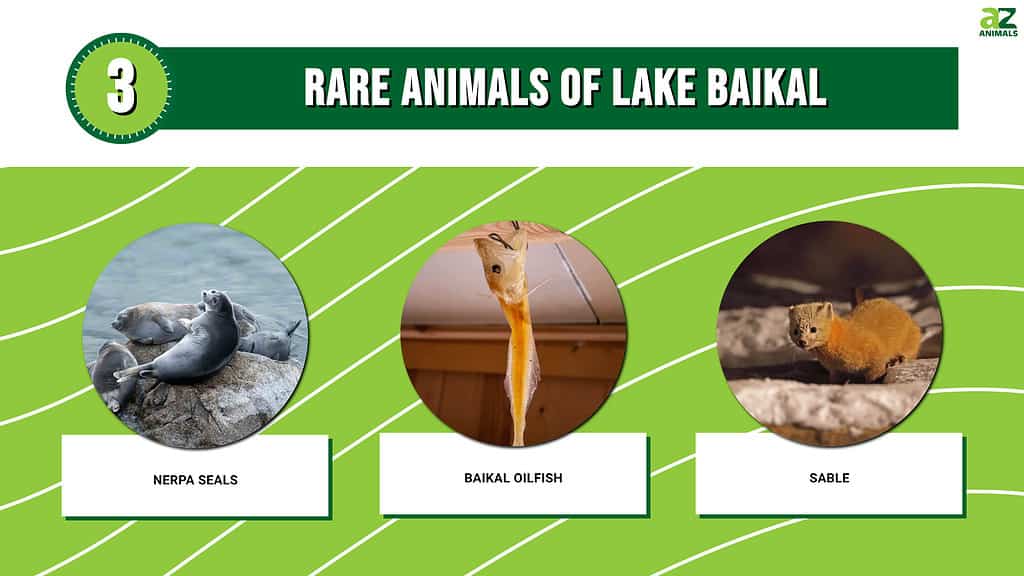
Lake Baikal is a prehistoric entity. At 30 million years old, it is the oldest and deepest lake on earth. It’s hard not to feel awestruck at the beauty of this massive, ancient lake that is home to over 2,000 plants and animals. But like with most old things, Lake Baikal is mysterious. Why is it so deep, what rare species inhabit the area, and what lives at the bottom of Lake Baikal?
What is Lake Baikal?
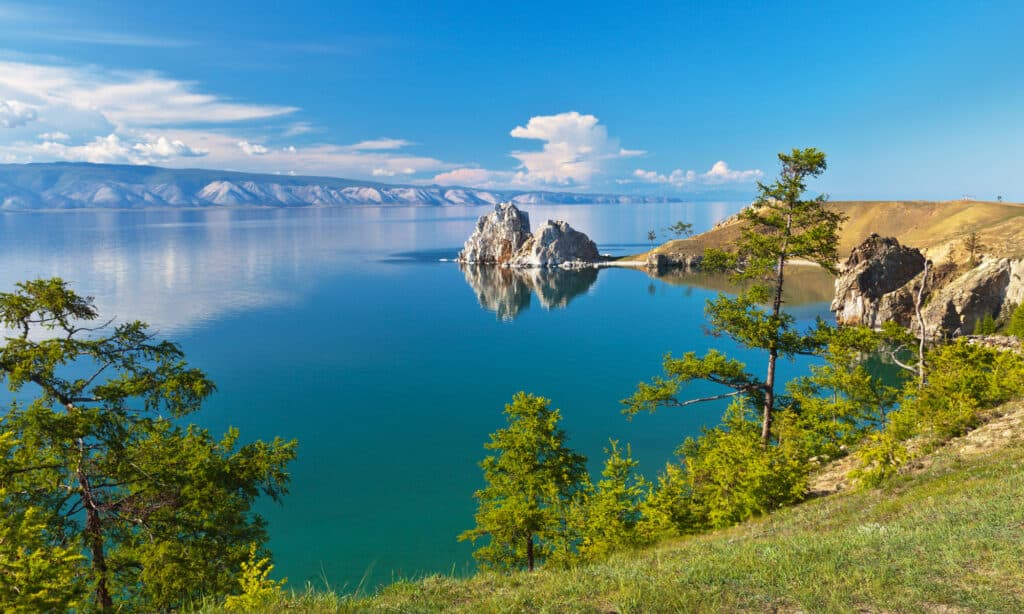
Lake Baikal is the oldest and deepest lake on earth.
©Katvic/Shutterstock.com
Located in Southern Siberia, Lake Baikal is a rift lake in Russia. This body of water holds many records and is revered worldwide for its importance in evolutionary science. It has the title of the largest freshwater lake by volume (containing 22% of the world’s fresh surface water), the world’s deepest lake (maximum depth of 5,387 feet), and the world’s oldest lake (25 to 30 million years old).
To recap: it’s enormous, bottomless, and ancient. Oh, and it’s also one of the clearest lakes in the world. You can see down to the bottom at around 130 feet in some areas. When it’s frozen, which is about five months out of the year, the surface looks like glass.
The lake is home to thousands of species of plants and animals, some of which are endemic to the area (more than 80%). Over 50 fish species swim in Lake Baikal, and 27 of them can only be found in this cold water. Some creatures are better at adapting to extreme depths and temperatures than others. Is there any life at the bottom of Lake Baikal? How did it become the world’s deepest lake?
Why is Lake Baikal So Deep?
This vast Siberian lake has a maximum depth of 5,387, over a mile below the water’s surface. The largest lake in the world is in a rift valley, which the Baikal Rift Zone creates. These continental rifts are beneath Lake Baikal, where the earth’s crust slowly moves apart.
The Baikal is the most profound continental rift on the planet, and because it’s young and active, it continues to widen about 2 centimeters per year. As the rift widens, it also grows deeper, meaning Lake Baikal hasn’t finished growing.
What Lives at the Bottom of Lake Baikal?
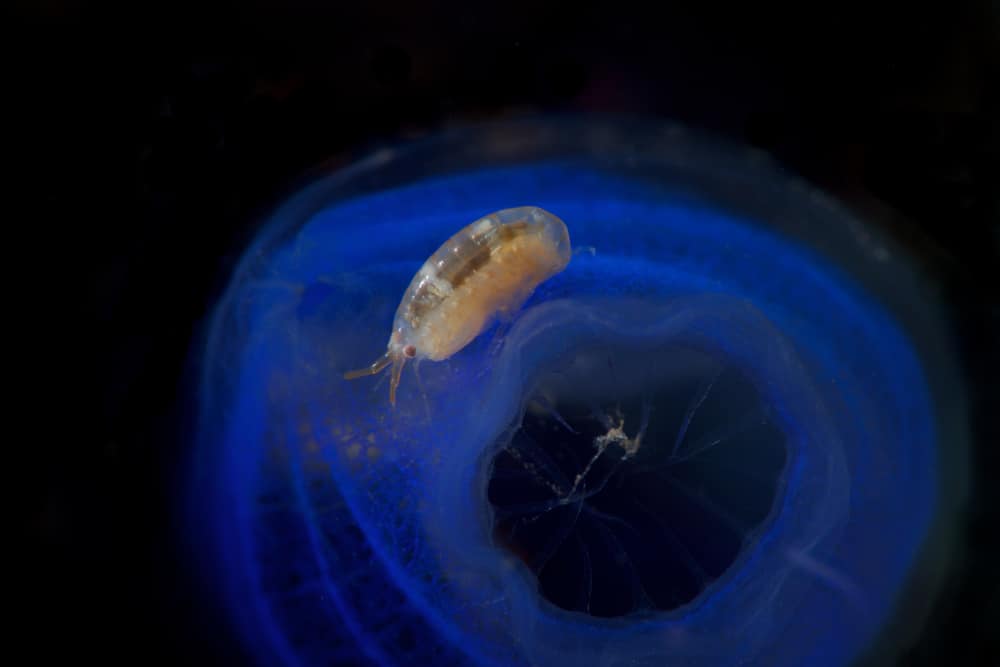
Amphipods (shrimp-like creatures), microbial mats, limpets, and endemic fish live at the bottom of Lake Baikal.
©The Urban Tropic/Shutterstock.com
Giant mats of bacteria, sponges, limpets, fish, and amphipods (small shrimp-like creatures) live at the bottom of Lake Baikal. Indigenous people of Siberia claim the lake is home to a giant dragon called Lusud-Khan, but researchers have only found these small deepwater creatures, which are still pretty fascinating. They have evolved to withstand complete darkness and intense underwater pressure.
The lake has high levels of dissolved oxygen even at its extreme depths. It is most likely due to the process of convection, which cycles water from the bottom up to the surface and back down again. This cycle is influenced by several factors like the vents, wind, and salinity. High oxygen levels can help underwater creatures grow to unusually large sizes. For instance, Lake Baikal has over 350 amphipods, much larger than average.
With how vast this lake is, there should be giant monsters dwelling in the dark depths, right? The first humans to explore the bottom of Lake Baikal wasn’t until 2008, and not much research has commenced since then. So, truthfully, we still don’t know what lurks down there. Rest assured, though, that the lake is flourishing with extraordinary life.
Rare Animals of Lake Baikal
Nerpa Seals
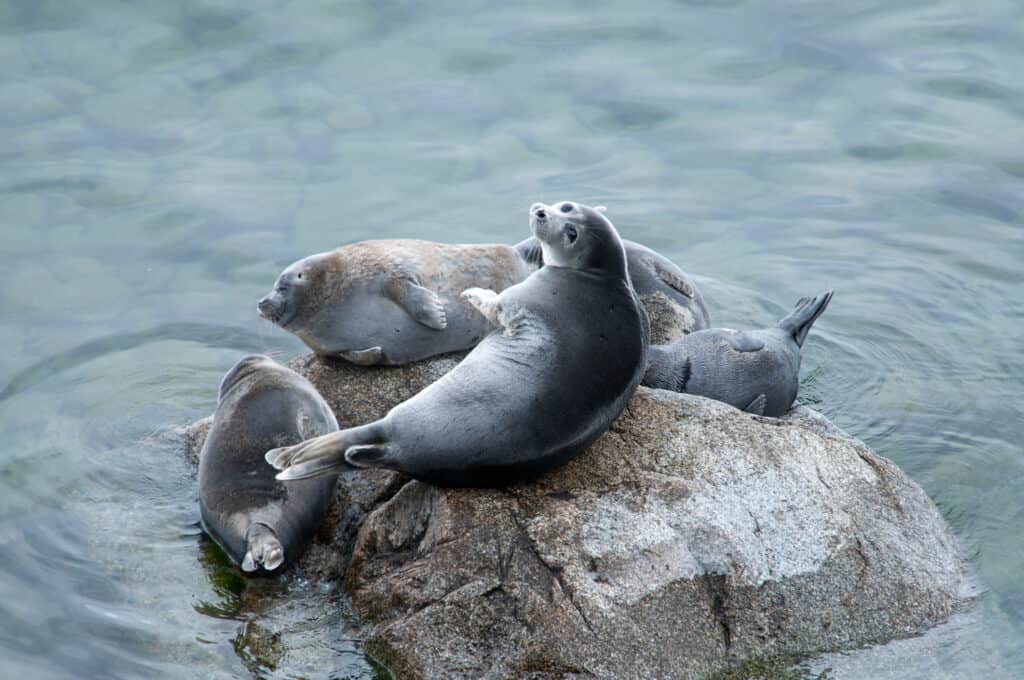
Nerpa seals are endemic to Lake Baikal and are the only exclusively freshwater seals in the world.
©iStock.com/andreigilbert
These seals are endemic to Lake Baikal and are the only exclusively freshwater seals in the world. It’s a mystery how these adorable puppy-like creatures got to the lake, as the ocean is hundreds of miles away. Nonetheless, their population is around 100,000, and they have been there for approximately two million years. Their primary food source is the cottoid oilfish, which is endemic to Lake Baikal.
Baikal Oilfish
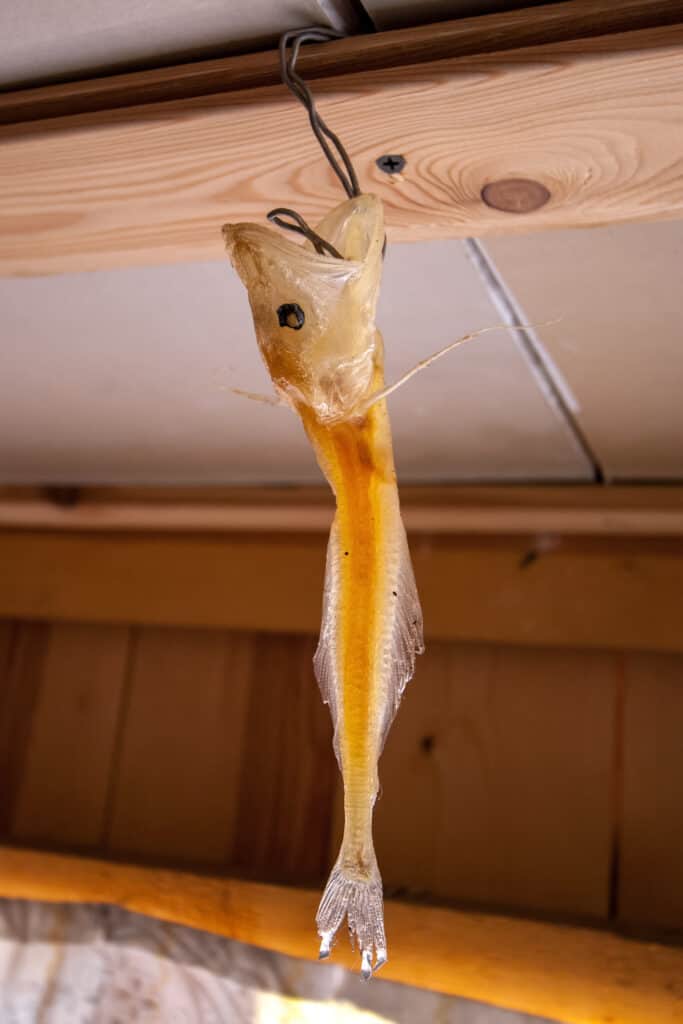
The Baikal oilfish combines two sculpin fish species only found in Lake Baikal.
©iStock.com/Vladimir Kazakov
The Baikal oilfish combines two sculpin fish species only found in Lake Baikal. This unique fish has a translucent body with no scales and appears dull when dead. This species can tolerate varying pressure levels, and its body composition allows for better handling of extreme depths. Some people (unverified) claim that its body decomposes in sunlight, only leaving behind fatty oil and bones.
Sable

The sable is a species of marten, a weasel-like mammal that only inhabits the forests of Russia and the Ural Mountains in Siberia.
©iStock.com/neil bowman
The sable is a species of marten, a weasel-like mammal that only inhabits the forests of Russia and the Ural Mountains in Siberia. Sables don’t live in the water, but they live in burrows near the banks. They also hunt for fish by using their sense of smell and sound. Historically, sables have been highly valued for their fur, and Russian diplomats once referred to them as “Golden fleece.”
What’s Wrong With Lake Baikal?
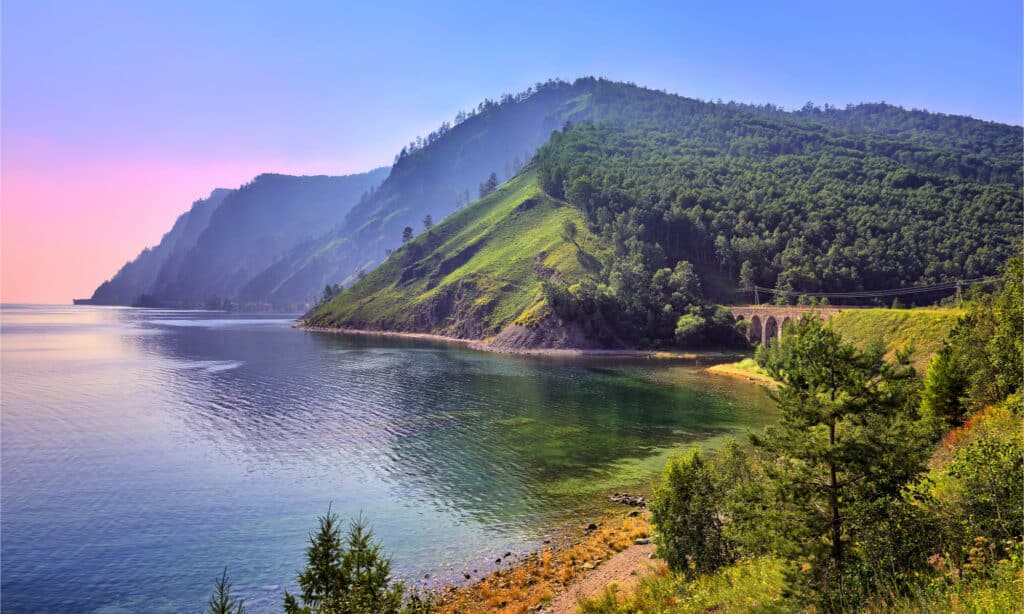
Pollution and invasive species led to the disappearance of endemic species, and more could follow if the temperature continues to rise.
©Nikitin Victor/Shutterstock.com
Due to pollution from industrial plants and invasive species of algae, Lake Baikal is facing a series of detrimental phenomena like the death and disappearance of several endemic species. The lake’s water temperature has risen more than 2 °F since 1946, and scientists believe it will continue to grow by another many degrees by the year 2100. This temperature increase contributes to toxic algae blooms harmful to fish and crustaceans. Lake warming can also deplete oxygen, killing numerous creatures like amphipods and other deepwater creatures. While this is a difficult situation, there is still time to save this majestic lake’s animals and natural beauty.
Interesting Facts
- Buryat (Mongolian) tribes live on the eastern side of the lake and raise animals like goats, camels, and sheep.
- Over 2,000 mini earthquakes occur at Lake Baikal every year.
- The majority of its species are found nowhere else on earth. This diversity is due to its hydrothermal vents, which are more commonly found in oceans.
- Lake Baikal has 27 islands. Olkhon is one of the largest lake islands in the world and an excellent vacation destination. You have to travel on an ice road to get there.
- The first European reached the lake in 1643.
- Lake Baikal’s water is completely renewed every 383 years.
The photo featured at the top of this post is © Nikitin Victor/Shutterstock.com
Thank you for reading! Have some feedback for us? Contact the AZ Animals editorial team.






